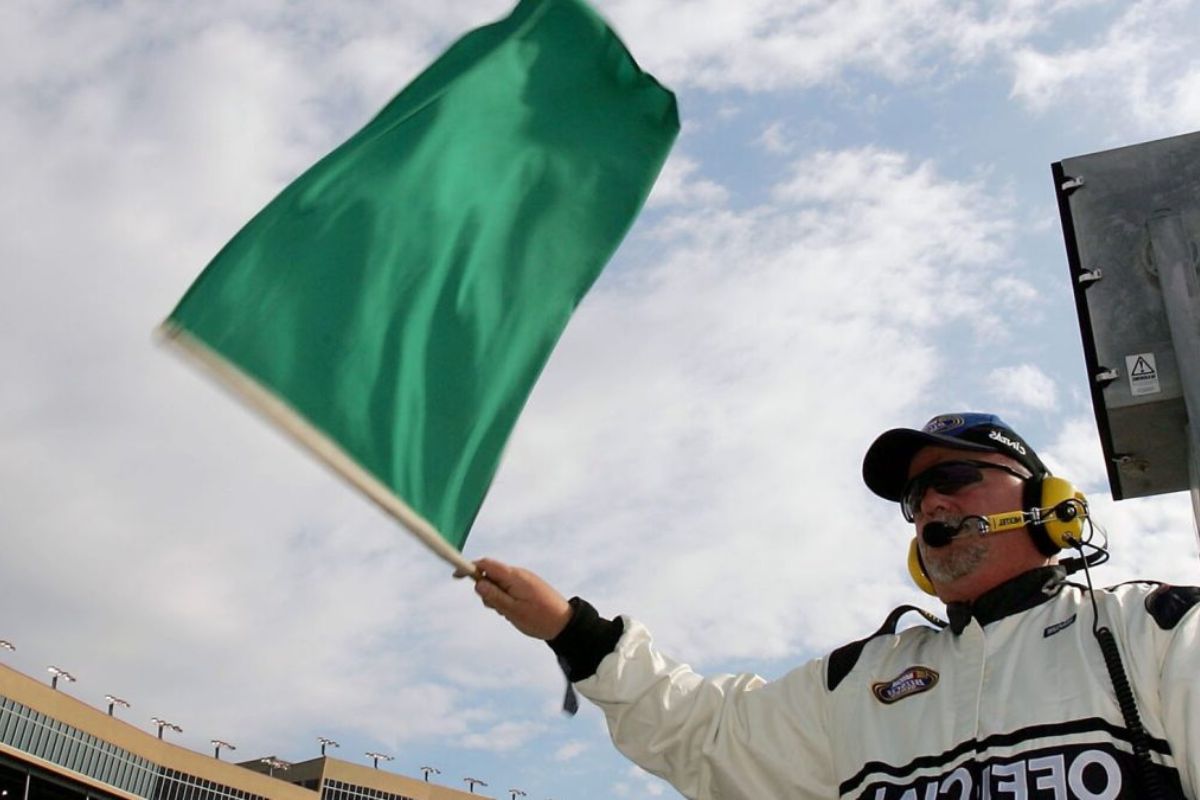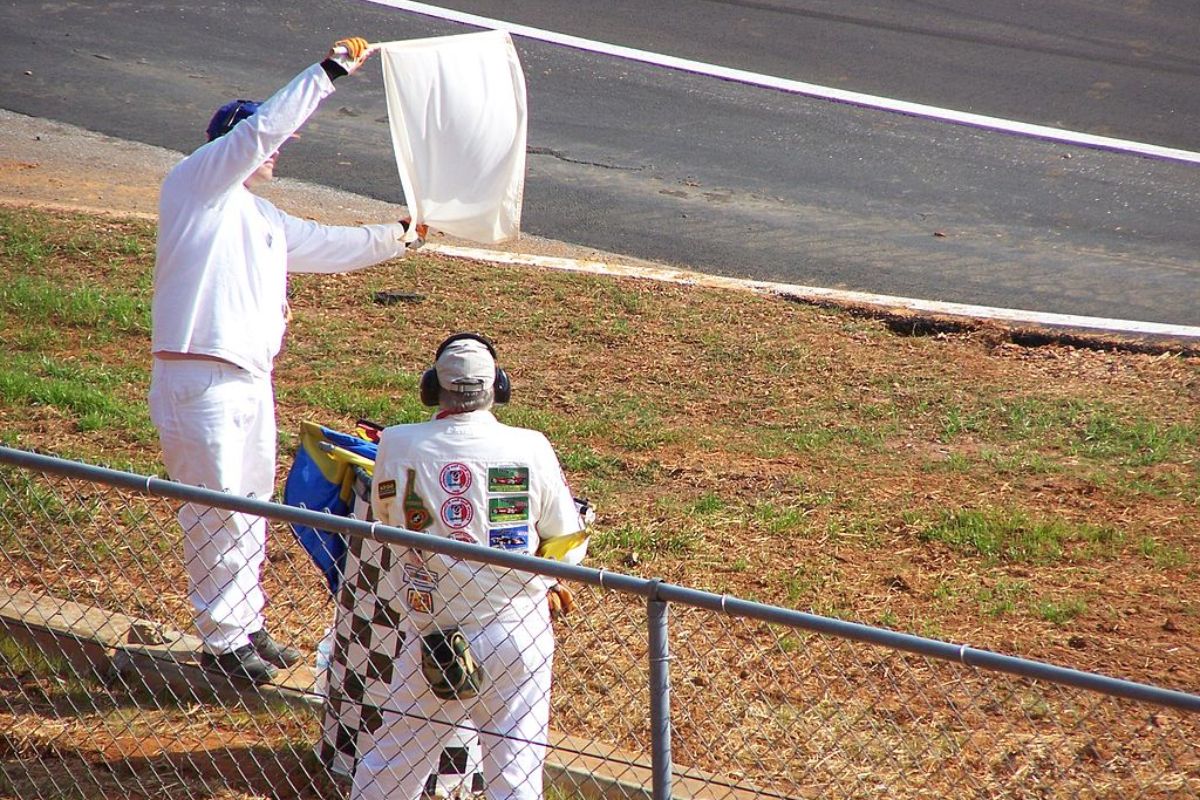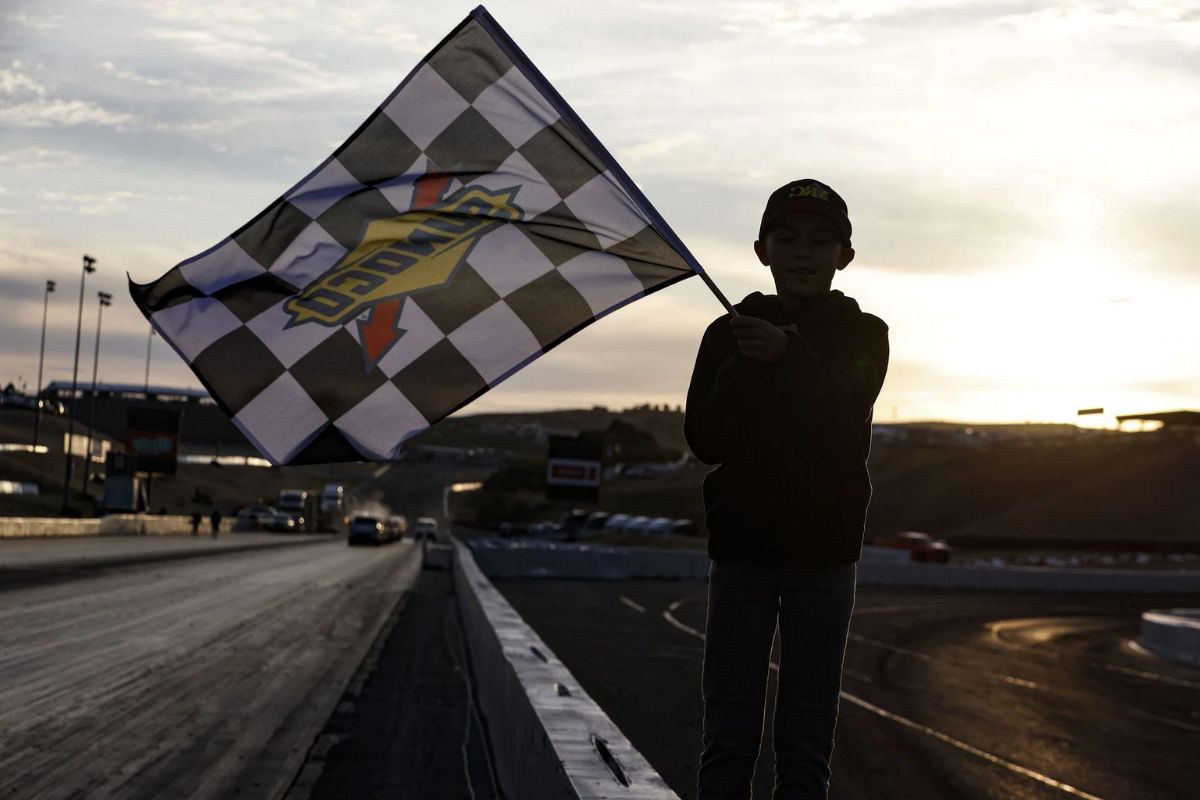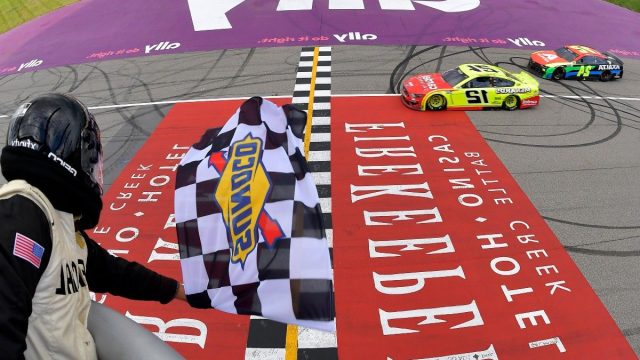Story Behind NASCAR Flags: NASCAR, the high-speed world of stock car racing, is not only a thrilling spectacle of speed and skill, but also a sport that relies heavily on a complex system of flags to communicate vital information to drivers.
These flags, each with its own unique symbolism, play a crucial role in regulating the flow of the race and ensuring the safety of the drivers and spectators alike.
From the green flag that signals the start of the race to the checkered flag that marks its conclusion, each flag carries a wealth of meaning and understanding them is essential for both drivers and fans.
So, let’s embark on a journey to decode the symbolism behind NASCAR flags and uncover the intriguing story behind these race signals.
Key Takeaways
- NASCAR flags serve as important communication tools during races to ensure safety and fairness.
- Different colored flags represent specific actions or conditions on the track, such as starting the race, caution periods, rule infractions, and the end of the race.
- Flags with unique combinations or patterns are used in special scenarios to add excitement and unpredictability to the race.
- The symbolism behind NASCAR flags highlights the importance of safety, competition, and the thrill of victory in the sport.
The Starting Line: Green and Yellow Flags in NASCAR
At the beginning of every NASCAR race, the green flag waves, signaling the start of full-speed racing and the adrenaline-fueled pursuit of victory. This iconic flag marks the moment when drivers can unleash their horsepower and skill to compete for the win.
The green flag represents the signal for all drivers to accelerate, jostling for position as they navigate the tight confines of the track. It is a thrilling sight as the pack of cars speeds down the straightaway, engines roaring and tires screeching.
However, racing can also be unpredictable, and that’s where the yellow flag comes into play. When an incident occurs on the track, such as a crash or debris, the yellow flag is displayed, indicating a caution period. This allows for the safe removal of hazards and ensures the well-being of the drivers and track personnel.
The yellow flag serves as a reminder that even in the pursuit of victory, safety remains paramount in NASCAR.

Halt and Caution: The Red and Black Flags in NASCAR
The red and black flags hold significant importance in NASCAR races, serving as signals that halt the race and address rule infractions, respectively. Here is a breakdown of their meanings:
- Red Flag: When the red flag is displayed, it indicates that the race must come to a complete stop. This usually occurs due to adverse conditions on the track, such as heavy rain, fog, or debris. The safety of the drivers and track workers is of utmost importance, and the red flag allows for necessary precautions to be taken.
- Black Flag: The black flag is used to address rule infractions by specific drivers. When a driver receives the black flag, it serves as a consultation flag, signaling them to come into the pit area to discuss the issue with race officials. Rule infractions can include actions such as speeding, reckless driving, or ignoring safety protocols.
These flags play crucial roles in maintaining the safety and fairness of NASCAR races, ensuring that the drivers adhere to the rules and that any potential hazards are promptly addressed.
Final Lap and Race Conclusion: White and Checkered Flags
As a NASCAR race nears its conclusion, the white and checkered flags take on crucial roles in signaling the final lap and marking the end of the race. The white flag is displayed to indicate that there is only one lap remaining. This flag is waved by the starter or displayed on a digital board, alerting drivers to give their final push for victory. It is a moment of intense anticipation and strategy, as drivers aim to make their move and secure their position before the race concludes. Once the white flag is shown, the checkered flag is not far behind.
The checkered flag is the ultimate symbol of victory in NASCAR. It is waved when the first car crosses the finish line, officially ending the race and determining the final results. Every driver must cross the checkered flag to be classified and receive their finishing position. This iconic flag signifies the completion of a grueling race and the triumph of the race winner. Let’s take a closer look at the symbolism of these flags in the following table:
| Flag | Symbolism |
|---|---|
| White Flag | Signals the last lap of the race |
| Checkered Flag | Marks the end of the race and determines finishing positions |
These flags not only serve as important race signals, but they also evoke a range of emotions in drivers and fans alike. The white flag fuels drivers with adrenaline and intensifies the competition, while the checkered flag brings a sense of accomplishment and celebration. Understanding the meaning and significance of these flags adds depth to the experience of watching a NASCAR race and appreciating the skill and determination of the drivers.
Communication and Warnings: Blue and Crossed Flags in NASCAR
NASCAR utilizes blue and crossed flags as communication tools during races to relay crucial information to drivers. Here is how they are used:
- Blue Flag: When a driver observes a solid blue flag, it signifies that faster cars are approaching from behind and the driver needs to yield and allow them to pass safely. On road courses, the blue flag may have diagonal yellow stripes, indicating that there is a hazard ahead.
- Crossed Flags: This flag combination indicates a significant change in track conditions. It can be used to alert drivers of oil spills, debris on the track, or other unforeseen problems that may impact their safety or race performance.
- Black Flag with Crossed White Lines: This flag is a warning to a specific driver that they have violated race regulations. It can result in penalties, such as a time penalty or disqualification, depending on the severity of the infraction.

Special Scenarios: Unique Flag Combinations in NASCAR
In addition to the standard blue and crossed flags, NASCAR introduces unique flag combinations for specific scenarios, adding an extra layer of complexity and communication to the race.
On road courses, a yellow flag with vertical red stripes is used to signal the presence of debris on the track. This helps drivers be aware of potential hazards and adjust their strategies accordingly.
Another unique combination is the red and black flag, which signifies the conclusion of practice or qualifying sessions. This allows drivers to know when their allotted time for preparation or qualifying has ended.
Additionally, NASCAR has implemented the use of two checkered flags and the green-white-checkered flag sequence in case of cautions in the final laps. These special scenarios ensure that the race remains exciting and unpredictable until the very end.
Conclusion of Story Behind NASCAR Flags
The flags used in NASCAR hold significant symbolism and play a crucial role in communicating with drivers and ensuring the safety of the race.
From the green flag signaling the start of the race to the checkered flag marking its conclusion, each flag serves a specific purpose.
By understanding the meanings behind these flags, fans can gain a deeper appreciation for the intricacies of the sport.

Our Reader’s Queries
Q. What do NASCAR race flags mean?
A. Green flag: Marks the commencement of the race or the conclusion of a caution period.
Q. Why is there a red flag in NASCAR?
A. The solid red flag is exhibited when conditions are deemed too hazardous to continue the session. In response, depending on the racing series and the specific circumstances, cars are usually instructed to either proceed directly to pit road or come to a stop at a designated spot on the track.
Q . What did NASCAR originally stand for?
A. The original name selected for the series was National Stock Car Racing Association. However, upon discovering that a rival sanctioning body already held that name, a new suggestion by mechanic Red Vogt, “National Association for Stock Car Auto Racing,” was adopted as the organization’s official name.
Q. What is the lightning rule in NASCAR?
A. NASCAR mandates a minimum delay of 30 minutes for each lightning strike occurring within an eight-mile radius of the track. If subsequent lightning occurs before the initial 30-minute delay concludes, the clock restarts. This regulation was implemented in 2017, replacing the previous practice where the lightning procedure was determined by the rules of each individual racetrack.
Q. How many laps is NASCAR?
A. The 2023 NASCAR Cup Series Championship Race is set for 312 laps at the 1-mile Phoenix Raceway, covering a total distance of 312 miles. The race will be divided into three segments, each with a specific number of laps: Stage 1 comprises 60 laps, Stage 2 consists of 125 laps, and Stage 3 concludes with 127 laps.
Q. When did NASCAR stop painting cars?
A. NASCAR began incorporating vinyl in the early 2000s. Prior to this, teams used to paint the designs directly onto the cars instead of applying vinyl graphics.
Q. Why do NASCAR cars have pink windows?
A. NASCAR Cup Series veteran driver Kurt Busch has revealed that the Window of Hope pink window net program will make a return for a second year. This initiative aims to demonstrate support for breast cancer survivors and those currently facing the challenges of battling breast cancer.
ALSO READ: Nascar Lucky Dog Rule: Understanding Its Origins and Controversies
